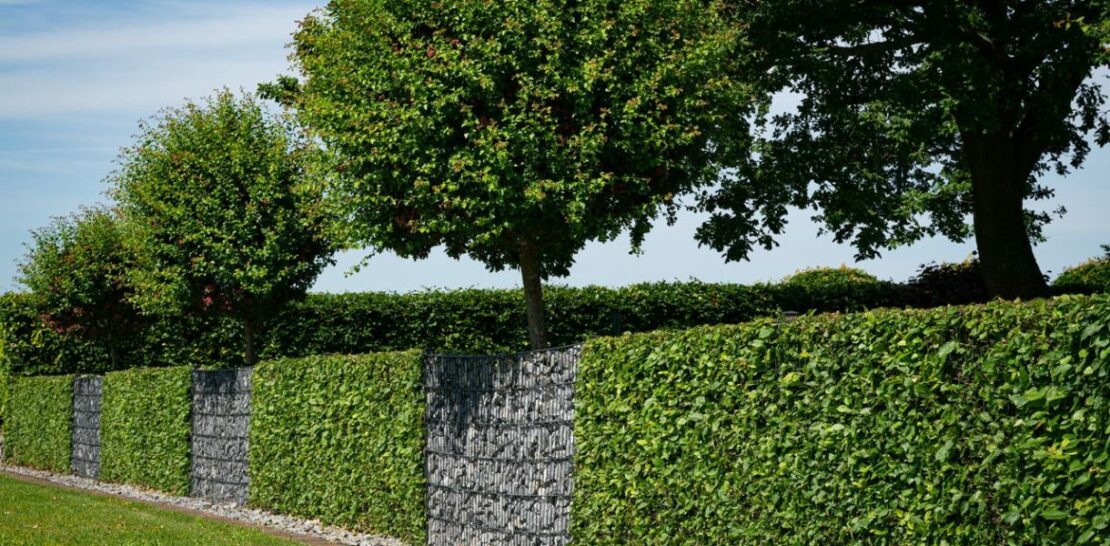Welcome to an in-depth exploration of the diverse world of plant hedges and how to select the most suitable type for your garden.
As a specialist of the English language, I will present you with a comprehensive analysis of various hedge types, including the benefits, drawbacks, and planting tips for each one.
By the end of this article, you will have gained extensive knowledge on plant hedges, empowering you to make an informed decision when planning your garden’s design.
1. Evergreen Hedges: The Year-Round Solution
Evergreen hedges are a popular choice among homeowners and landscapers due to their consistent appearance throughout the year. These hardy plants retain their leaves and color even in harsh winter conditions, providing a reliable backdrop for your garden.
- Boxwood (Buxus sempervirens): Ideal for formal gardens, boxwood hedges are known for their dense, dark green foliage and ability to withstand frequent trimming. Boxwoods are also resistant to pests and diseases, making them a low-maintenance option.
- Yew (Taxus baccata): With their dark green, needle-like leaves and red berries, yew hedges create a visually striking barrier. Yews are a slow-growing species, but their longevity and tolerance for shade make them a popular choice for long-lasting hedges.
- Holly (Ilex aquifolium): Holly hedges, characterized by their glossy green leaves and bright red berries, add color and interest to your garden. Holly is resilient, can withstand various climates, and provides an excellent habitat for wildlife.
- Thuja (Thuja occidentalis): Also known as white cedar, thuja hedges offer a more textured appearance with their flat, fan-like foliage. Thujas are fast-growing, making them ideal for creating a privacy screen in your garden.
When selecting an evergreen hedge, consider your desired level of maintenance, local climate, and garden style. Regardless of your choice, evergreen hedges provide year-round visual interest and habitat for wildlife, making them a fantastic addition to your garden.
2. Deciduous Hedges: Embracing Seasonal Changes
For those who appreciate the changing seasons, deciduous hedges offer a dynamic alternative to evergreen varieties. These hedges shed their leaves in the fall, revealing unique branch structures that add architectural interest to your garden.
- Beech (Fagus sylvatica): One of the most popular deciduous hedges, beech offers a stunning display of foliage, ranging from green to coppery, depending on the variety. Beech hedges also provide a subtle privacy screen, as they retain their dead leaves through winter.
- Hornbeam (Carpinus betulus): Similar in appearance to beech, hornbeam hedges boast serrated leaves and a more textured bark. Hornbeam is a highly adaptable species, making it suitable for various soil conditions and climates.
- Hazel (Corylus avellana): With its abundant catkins and edible nuts, hazel hedges offer more than just visual appeal. Hazels are fast-growing and can be coppiced, resulting in a dense, bushy hedge that provides excellent habitat for wildlife.
- Spindle (Euonymus europaeus): For a truly unique hedge, consider the spindle with its vibrant pink and orange fruits. Spindle hedges attract birds and butterflies, creating a lively atmosphere in your garden.
While deciduous hedges may require more maintenance than their evergreen counterparts, they provide a stunning display of seasonal color and texture. By choosing a deciduous hedge, you can create an ever-changing canvas for your garden’s design.
3. Flowering Hedges: A Visual and Aromatic Delight
Flowering hedges serve a dual purpose: they not only provide privacy and structure but also a stunning display of blooms and fragrance. Consider incorporating one of these flowering varieties into your garden to elevate the sensory experience.
Rose (Rosa spp.): Roses, with their timeless elegance and varied color palette, create a classic hedge that appeals to many gardeners. Opt for a repeat-flowering variety to ensure a prolonged display of blooms. Be prepared for routine pruning and pest management to keep yourrose hedge looking its best.
Lilac (Syringa vulgaris): Known for their sweet fragrance and clusters of purple, pink, or white flowers, lilac hedges make a stunning addition to any garden. Lilacs require well-drained soil and full sun to thrive. While they may not provide dense privacy like other hedge varieties, their beauty and fragrance more than compensate for it.
Mock Orange (Philadelphus spp.): Mock orange hedges are an excellent choice if you desire a lush, fragrant border. Their white, orange-blossom-scented flowers bloom in early summer, attracting bees and butterflies. Be aware that mock orange can grow quite large, so regular pruning is necessary to maintain a neat appearance.
Escallonia (Escallonia spp.): If you’re searching for a flowering hedge that can withstand coastal conditions, look no further than escallonia. These evergreen shrubs produce clusters of pink, red, or white flowers in summer and can tolerate salt spray and strong winds. Escallonia hedges are relatively low-maintenance, requiring only occasional pruning to maintain their shape.
Adding a flowering hedge to your garden not only enhances its visual appeal but also engages the senses with delightful aromas and the buzzing of pollinators. Be prepared to dedicate some time to pruning and nurturing these hedges, as they typically require more care than foliage-only varieties.
4. Hedgerows: A Haven for Wildlife
For those seeking to create a more natural, wildlife-friendly garden, hedgerows offer an ideal solution. These informal hedges consist of a mix of native shrubs, trees, and climbers, providing food and shelter for a variety of creatures.
When planning a hedgerow, aim to include a diverse selection of plants to support a broader range of wildlife. Some excellent choices for your hedgerow include:
- Hawthorn (Crataegus monogyna): A staple of traditional hedgerows, hawthorn provides dense cover and valuable nesting sites for birds. Its white flowers and red berries are also a food source for many species.
- Blackthorn (Prunus spinosa): Blackthorn is another excellent addition to a hedgerow, with its dense, thorny branches and early spring flowers. The sloe berries produced by blackthorn are a favorite among birds and can also be harvested for making sloe gin.
- Dog Rose (Rosa canina): This native wild rose adds a touch of beauty to your hedgerow as well as providing rose hips, an essential food source for birds and mammals during the winter months.
- Elder (Sambucus nigra): Elder is a versatile hedgerow plant, offering clusters of fragrant flowers in spring and small, dark berries in autumn. Both the flowers and berries can be harvested for making cordials, jams, and wines.
Creating a hedgerow in your garden not only adds visual interest but also contributes to the local ecosystem by supporting a diverse range of wildlife. Keep in mind that hedgerows thrive with minimal intervention, so embrace a more hands-off approach when maintaining these hedges.
In conclusion, the world of plant hedges offers a plethora of options to suit any garden style, climate, or desired level of maintenance. From evergreen stalwarts to fragrant flowering varieties and wildlife-friendly hedgerows, there is a hedge out there to meet your specific needs. By considering your garden’s conditions, design, and inhabitants, you are well-equipped to make an informed decision on the perfect plant hedge for your outdoor space. Create a personalized sanctuary by incorporating one or more of these versatile hedge types and enjoy the myriad benefits they bring to your garden.




